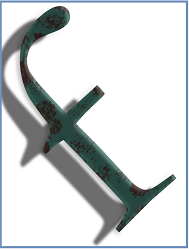CHILDHOOD REPRESENTATION IN LEO CUNHA'S POEMS FROM THE BOOK: SÓ DE BRINCADEIRA
DOI:
https://doi.org/10.22481/folio.v12i1.6191Abstract
Children's reception poetry reveals a universe of feelings and perceptions of the author and they are connected to the way of representing elements related to childhood. Furthermore, these elements can be subjective or of a confessional nature, they can also be linked to children's ritual and the world projected by this kid from the actions, such as toys and plays. Leo Cunha’s project, which created the book Só de brincadeira is responsible for the exploitation of these themes, more specifically, poems for childhood and its exploration (Positivo, 2018). So, these article separates the poems into two categories, poems related to toys and poems related to plays and presents analyses that seek to understand the author's way of representing childhood, taking as a starting point the poetic use of the object (the toy) or the game/activity (the play). Moreover, its analyses observe the poetic construction of Leo Cunha, taking into consideration the resources of the lyrical genre that the author mobilizes in the poems. Thus, it was possible to conclude that the poem often focuses on a toy and puts the object in a playful activity, which reveals that the play emerges from it. Therefore, Leo Cunha as an observer and creator takes advantage of this process as a poetic resource. Finally, it is easy to note Leo's latent talent in his writing, handling with poetic language and its intricacies.
Downloads
References
2. AYALA, Maria Ignez Novais. Aprendendo a aprender a cultura popular. In: PINHEIRO, Helder (Org.). Pesquisa em literatura. Campina Grande: Bagagem, 2003. p. 83-119.
3. ARAUJO, Rodrigo da Costa. Artifícios de mise en abyme: a leitura em ilustrações de livros infantis. In.: GRAZIOLI, Fabiano Tadeu; COENGA, Rosemar Eurico (Orgs.). Literatura infantojuvenil e leitura: questões, reflexões e experiências. Erechim: Habilis Press, 2013. p. 25-38.
4. MACHADO, Marina Marcondes. O brinquedo-sucata e a criança: a importância do brincar, atividades e materiais. 7. ed. São Paulo: Loyola, 2010.
5. MEDEIROS, Margarida. Fotografia e narcisismo: o auto-retrato contemporâneo. Lisboa: Assírio & Alvim, 2000.
6. FREIRE. Adilce Manuela Moreno. A representação do Ilhéu em Manoel Lopes. 2010. 65 f. Trabalho de Conclusão de Curso (Licenciatura em Estudos Cabo-Verdianos e Português), Universidade de Cabo Verde, Lisboa, 2010.
7. GENETTE, Gérard. Introdução ao arquitexto. Tradução de Cabral Martins. Lisboa: Vega, 1986.
8. GENETTE, Gérard. Palimpsestos: a literatura de segunda mão. Extratos traduzidos por Cibele Braga, Erika Viviane Costa Vieira, Luciene Guimarães, Maria Antônia Ramos Coutinho, Mariana Mendes Arruda, Miriam Vieira. Belo Horizonte: Viva Voz, 2010.
9. GUERREIRO, Emanuel. O conceito de representação: literatura, religião e cinema. Revista Vértice, Lisboa, n. 150, jan.-fev. 2010, p. 42-52.
10. KISHIMOTO, Tizuko Morchida. O jogo e a Educação Infantil. In.: KISHIMOTO, Tizuko Morchida. Jogo, brinquedo, brincadeira e educação. 10. ed. São Paulo: Cortez, 2007. p. 13-43.
11. PAES, José Paulo. Poemas para brincar. Ilustrações de Luiz Maia. 17. ed. São Paulo: Ática, 2011.
Downloads
Published
How to Cite
Issue
Section
License







